Track down your German ancestors with Germany genealogy expert Jim Beidler. He’s here to share great tips for using MeyersGaz.org, the recent online collection of crucial historical German maps.
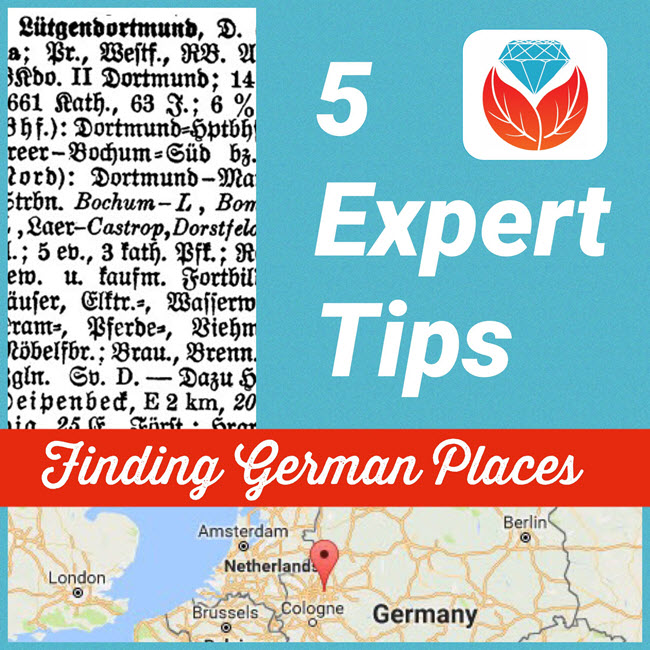
 The Meyers Gazetteer is a comprehensive, indexed map to every place name in the Second German Empire (1871-1918). It’s based on the 1912 book commonly known as “Meyers Orts” or the Meyers Gazetteer: Meyers Orts- und Verkehrs-Lexikon des Deutschen Reichs. Recently, a free version of the Meyers Gazetteer became available online at www.MeyersGaz.org.
The Meyers Gazetteer is a comprehensive, indexed map to every place name in the Second German Empire (1871-1918). It’s based on the 1912 book commonly known as “Meyers Orts” or the Meyers Gazetteer: Meyers Orts- und Verkehrs-Lexikon des Deutschen Reichs. Recently, a free version of the Meyers Gazetteer became available online at www.MeyersGaz.org.
5 Tips for Using the Meyers Gazetteer
German research expert Jim Beidler, author of Trace Your German Roots Online, recently offered Genealogy Gems followers five tips for using the site to trace your German roots:
1. Correctly locating the village of origin is often the key to finding Germany’s many locally-based records. The FamilySearch catalog, shown here, places German villages in the same political jurisdictions as Meyers-Ort (Second Empire), which can be incredibly helpful when looking for microfilmed church and other records. (Click here to learn more using the FamilySearch catalog and the end of their microfilm lending program.)
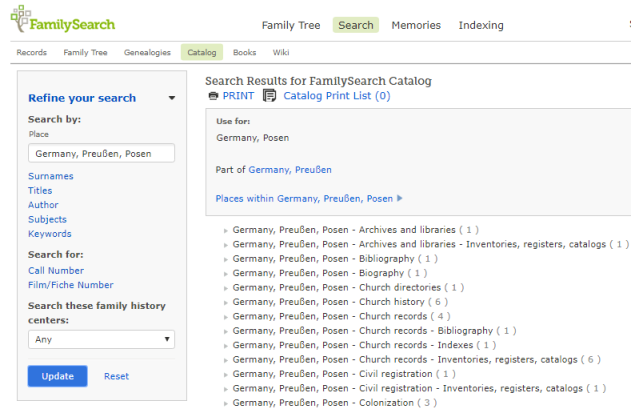
2. When searching the Meyers Gazetteer online, don’t use diacritical marks such as the umlaut (the two dots) or expand umlauted vowels (such as by turning an ä into an ae).
3. Filter search results to a specific German region to narrow results.
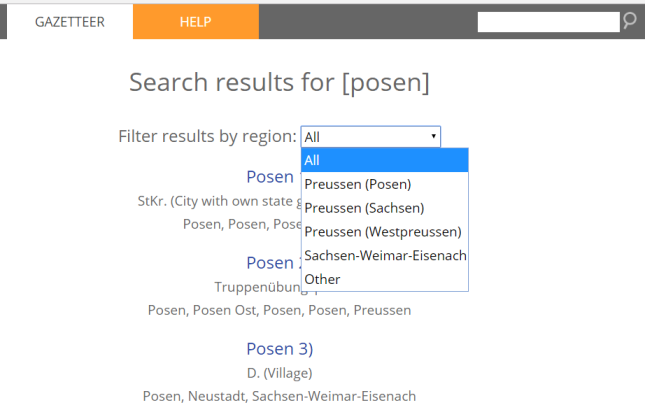
4. Explore places with an interactive map that allows you to zoom in and out and toggle back and forth between the past and present. After clicking on a search result, click Map. An interactive map will appear. Roll over Toggle Historical Map to see options to resize and to select whether the map shows you local jurisdictions, surrounding German civil registration offices (StdAs), and Catholic, Protestant and Jewish places of worship.
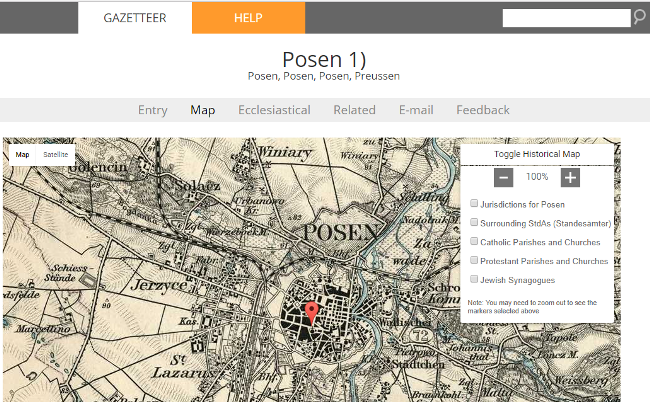
5. Click on Ecclesiastical to learn more about church parishes within 20 miles, which may have kept records on your family.
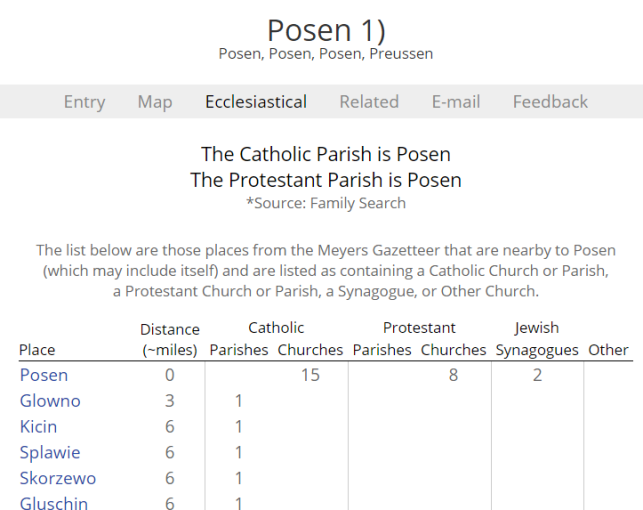
More from Jim Beidler on the Meyers Gazetteer
Genealogy Gems Premium members can sign in to our website and hear Jim go more in-depth on the Meyers Gazetteer for German genealogy research in Genealogy Gems Premium Podcast episode 143. Jim applies his decades of German research experience to the latest technological advances and brings you along for the ride!
Jim Beidler is the author of Trace Your German Roots Online, one of Family Tree Books’ top-selling genealogy guides.

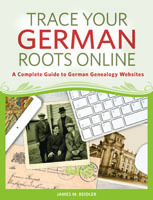




Thanks for this article. I’ve got a grandfather that I now believe came from the Posen area. I’ve been trying for years to identify ‘Kritz Posen’ from an old record for him. A past article set me on to the Gazetteer and identified the locale. I had asked work colleagues from Germany and they couldn’t come up with it. I had the pleasure of meeting Mr.Beidler briefly at a recent Ohio genealogy conference but wasn’t prepared for any significant discussion. At the time I was more focused on my Italian side.
I’m pretty sure that Kritz Posen is actually Kreis Posen. Kreis Posen According to Wikipedia, West was a Kreis in Prussia (county) in the southern administrative district of Posen, in the province of Posen.
I had spent over 20 hours copying out the German type script to have it translated! The new Meyers-Orts translation site really gets to the heart of what matters to genealogists. So does Mr. Beidler’s book- I read it straight through over 3 evenings and use it constantly. His talk at the Minnesota 1st Int’l German Genealogy Conference in August also proved he is a great historian too covering all the phases of German immigration within Eastern Europe and those to the United States. Hope he will be speaking at the 2nd conference scheduled 2019 in Sacramento!
Love your posts and newsletters. I’ve learned so much!! Thanks
Jo Acuff
On the Meyers maps, do the thinnest lines with small dots, visible when the map is enlarged, represent boundaries of fields or ownership of farms? The google maps appear often similar in the boundaries, and must represent field boundaries, but what about the Meyers maps?